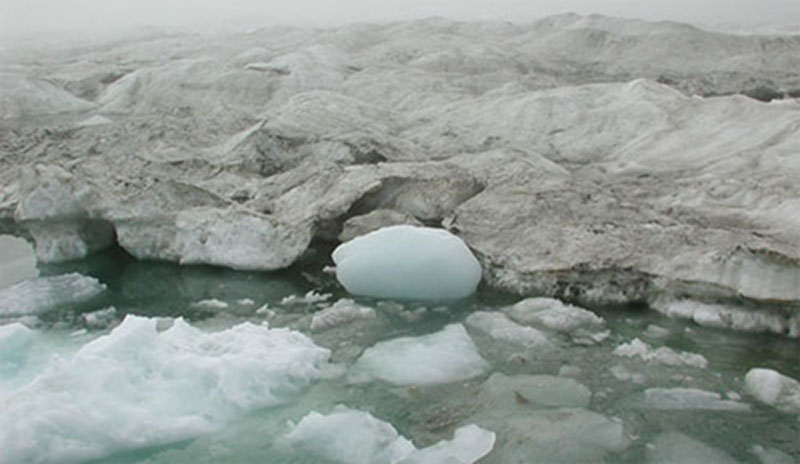
August 28 - September 17, 2012

Chukchi Sea Ice. Image courtesy of 2012 RUSALCA Expedition, RAS-NOAA. Download image (jpg, 57 KB).
On August 28, scientists onboard the Russian research vessel Professor Khromov left Nome, Alaska, to commence the second leg of the 2012 Russian-American Long-term Census of the Arctic (RUSALCA) cruise. This is the ninth year that RUSALCA scientists conducted long-term research to better understand the causes and consequences of environmental change in the fragile Arctic environment. Scientists returned to Nome on September 17.
In 2003, NOAA and the Russian Academy of Sciences signed a Memorandum of Understanding for World Ocean and Polar Regions Studies, thus laying the groundwork for the RUSALCA project. In 2004, Russian and U.S. scientists set out on an initial collaborative expedition to study the Bering and Chukchi Seas. A second multi-disciplinary cruise was conducted in 2009, and in 2012, RUSALCA scientists are returning once again to collect biological, chemical, and physical samples and data and to deploy instruments in both U.S. and Russian territorial waters. Additional, smaller cruises in the Bering Strait region have been conducted in other years, and oceanographic moorings have been deployed, recovered, and redeployed on a regular basis.
By regularly conducting observations in the same locations, scientists hope to collect the baseline information needed to understand the magnitude and effects of global changes on the Arctic environment and to establish a long-term climate-monitoring network in the region.
The Bering and Chukchi Seas and associated marine life are thought to be particularly sensitive to global climate change because these seas are places where steep temperature, salinity, and nutrient gradients in the ocean meet equally steep temperature gradients in the atmosphere. The Bering Strait acts as the only Pacific “gateway” into and out of the Arctic Ocean and thus is critical for the flux of heat between the Arctic and the rest of the world. Monitoring the flux of fresh and salt water as well as establishing benchmark information about the distribution and migration patterns of the life in these seas are critical pieces of information needed to better understand the causes and consequences of the reduction of ice cover in the northern part of the Bering and Chukchi Seas in the Arctic Ocean.
In 2012, scientists once again journeyed into the Bering Strait and northwards to the Pacific side of the Arctic Ocean, to gather long-term monitoring observations to help us better understand this northern part of our world.
RUSALCA is managed by NOAA's Arctic Research Program with contribution from the Office of Ocean Exploration and Research and by Group Alliance in Russia.
By Bodil Bluhm, Russ Hopcroft, and Katrin Iken
Marine biodiversity refers to the variety of living organisms in the ocean, from bacteria and fungi to invertebrates and fishes, all the way to marine mammals and birds. These biota are intricately connected with the environmental conditions they occur at and also with each other through the flow of energy (food) through the ecosystem. Any changes in the environment or this energy flow will lead to changes in the biodiversity.
Read moreBy Kate Stafford
The Bering Strait is the only gateway from the Pacific to the Arctic. As such, it is an important migratory corridor for marine mammals that spend the winter in the Bering Sea but much of the rest of the year in the Arctic. These species include Arctic-adapted animals such as bowhead and beluga whales, ice seals, polar bears, and walrus.
Read moreBy Catherine W. Mecklenburg
My team focuses on the identification and distribution of fishes that live on or near the bottom, the so-called benthic and demersal fishes. We use a bottom trawl net called an “otter trawl” to collect samples.
Read more